The Story of Manuscript 18
In December 2014, the Green Collection of Oklahoma City donated a Greek minuscule copy of the four Gospels to Museum of the Bible. It was thought that the manuscript was the work of the late thirteenth-century scribe Theodore Hagiopetrites, who had produced several signed and dated manuscripts near Thessaloniki. Dr. Tommy Wasserman, a professor of biblical studies at Ansgar Teologiske Høgskole, Kristiansand, Norway, examined this and other New Testament manuscripts while sponsored by the museum’s Scholars Initiative program. In the summer of 2015, Dr. Wasserman showed that the manuscript had been misidentified. The named scribe was not Theodore Hagiopetrites, but a person who called himself “Theodore, the sinful and reckless monk.” He also dated the manuscript to the twelfth century. With the help of Maurice Robinson, emeritus senior professor of New Testament studies at Southeastern Baptist Seminary, Dr. Wasserman found that the manuscript was already known to New Testament scholars by the Gregory-Aland number GA 2120. Therefore, he contacted the Institut für Neutestamentliche Textforschung in Münster, Germany, to update the manuscript’s location in both the Kurzgefaßte Liste der griechischen Handschriften des Neuen Testaments and the New Testament Virtual Manuscript Room (NTVMR). This information was in place by October 2015.
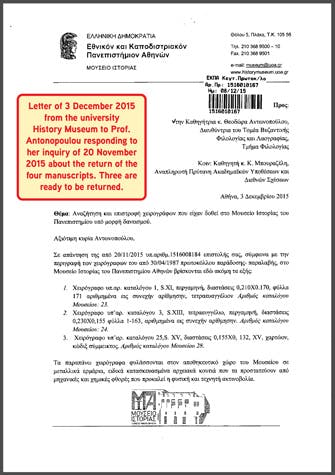
A Manuscript Is Missing

Approximately two months later, Professor Theodora Antonopoulou, director of the Library for Byzantine and Modern Greek Literature at the National and Kapodistrian University of Athens, learned that one of the library’s manuscripts was missing. In 1987, the university was celebrating its sesquicentennial anniversary. The library loaned the university’s newly-opened history museum four manuscripts for an exhibition to celebrate the occasion but the museum had not returned them. Professor Antonopoulou inquired about the manuscripts in late November. On December 3, 2015, the director of the history museum responded. The museum could return three manuscripts to the library. The fourth, designated Manuscript 18, was missing. The museum had inventoried everything in its collections in 1991, but Manuscript 18 did not appear on the list.
The Search Begins
Professor Antonopoulou began searching for the lost manuscript, and in early 2018 found the entry for GA 2120 on the NTVMR website.
Professor Antonopoulou turned to Dr. Kostas Buraselis, the vice rector for academic affairs and international relations at the university, for assistance. He sent a letter to the headquarters of Museum of the Bible in March 2018. The letter stated that Museum of the Bible’s manuscript 127 was the university’s Manuscript 18. The university had never given permission for the manuscript to leave the university or to be exported from Greece. The letter included a printout of information from the NTVMR and a photocopy of part of the manuscript’s description in a 1964 catalogue of manuscripts in the university’s collection. The university asked for the return of the manuscript.
Museum of the Bible’s Reaction
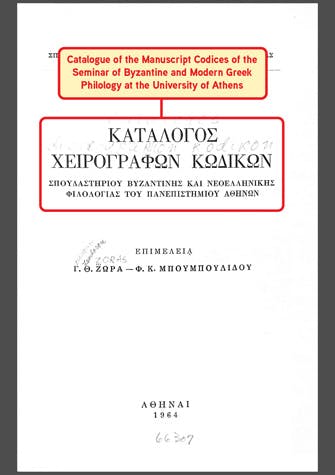
Museum of the Bible’s associate curator of manuscripts, Brian Hyland, immediately began an investigation into the manuscript’s provenance. He learned that the manuscript was originally part of the collection of Spyridon Lampros, a distinguished professor of paleography, history, and literature at the University of Athens and Greece’s prime minister from 1916–1917.

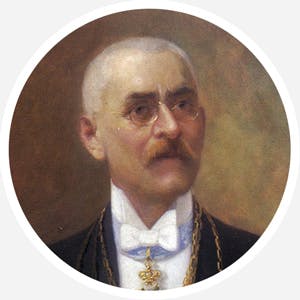
Spyridon Lampros

Hermann von Soden listed Lampros as the owner of the manuscript in 1902 in Die Schriften des Neuen Testaments in ihrer ältesten erreichbaren Textgestallt – hergestellt auf Grund iher Textgeschichte, which Caspar René Gregory verified in 1908 in Die griechischen Handschriften des Neuen Testaments.
Neos Hellēnomnēmon
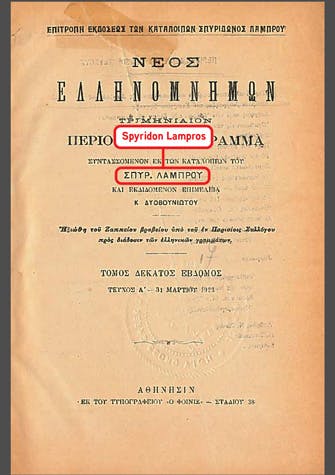
When Lampros died in 1919, his daughter, research assistant, and heir, Lina Tsaldari, inherited his collection, including Manuscript 18. She may have been involved in the publication of a catalog of Lampros’s collection in 1923 in Neos Hellēnomnēmon, a journal that Lampros had founded.

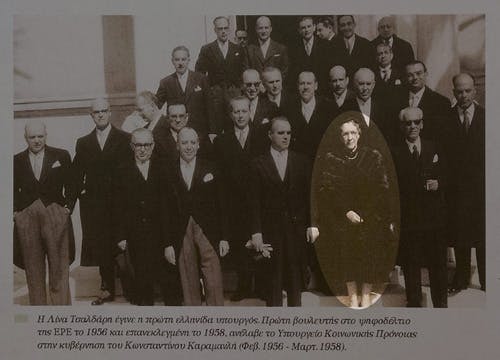
Lina Tsaldari, Greece’s First Female Cabinet Member

After serving as Greece’s first female cabinet member (1956–1958), Mrs. Tsaldari donated her father’s manuscript collection to the University of Athens in 1964.
Other publications gave further evidence of the donation. When Kurt Aland published the first edition of the Kurzgefaßte Liste in 1963, he listed Mrs. Tsaldari as the owner. Six years later, in 1969, Aland published a supplement to the Kurzgefaßte Liste that listed the university’s Byzantine Seminar as the owner. These facts established the university’s claim to the manuscript but did not show how or when the manuscript disappeared from the library.
Reappearance at Sotheby’s
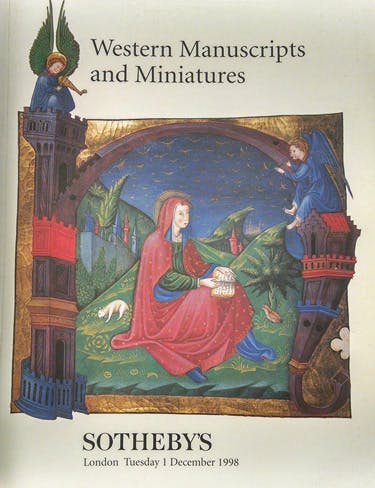

In December 1998, the manuscript appeared in the catalog of a Sotheby’s auction in London as Lot 67.
The description included a photo of the header at the beginning of the Gospel of Luke, next to the stamped folio number 122.
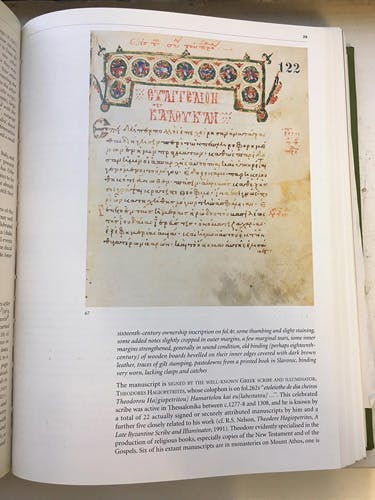

The catalog description included the erroneous information that the scribe was Theodore Hagiopetrites. The description also made clear that the manuscript was now missing its final folio, which contained a lengthy inscription.
It is uncertain who bought the manuscript at this time or how many times the manuscript changed hands between 1998 and 2010, when the Green Collection acquired it.
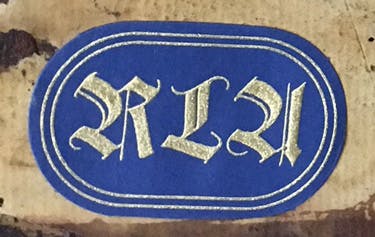

One clue is the small blue oval bookplate inside the front cover with the gold initials RLA. The bookplate belongs to the internet pioneer Rick Adams, according to the Les Enluminures website.
Sharing Research Results
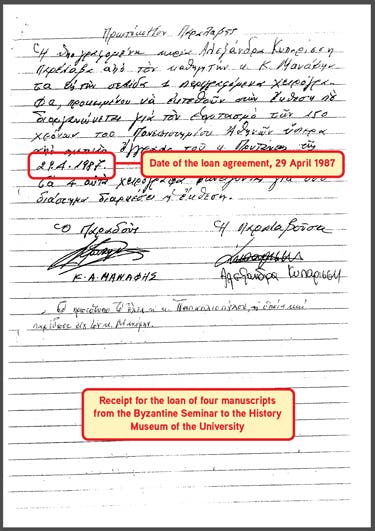
Museum of the Bible and the University of Athens shared their findings in May 2018. A handwritten receipt placed the delivery of the four manuscripts from the Library for Byzantine and Modern Greek Literature to the university’s history museum on April 30, 1987.
Manuscript 18 disappeared at some time between that date and the 1991 inventory. As these dates are well before the foundation of Museum of the Bible, the university was reassured that the museum had played no role in the disappearance of the manuscript. On the contrary, the museum’s sponsorship of Dr. Wasserman gave him the opportunity to examine and correctly identify the manuscript, which ultimately led to Professor Antonopoulou finding it on the NTVMR website. Based on these findings, both institutions came to an amicable settlement.

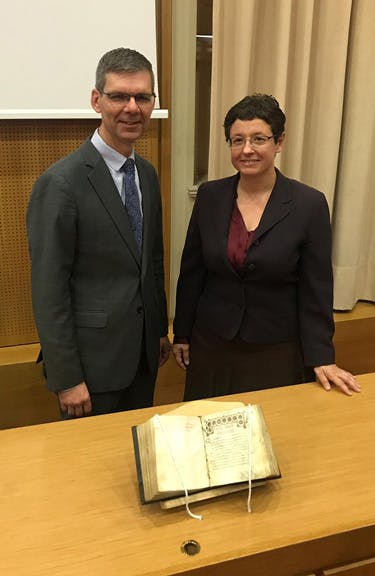
The Agreement

Museum of the Bible would present a small exhibit highlighting its ongoing task of provenance research on artifacts in the collection, using Manuscript 18 as a case study to emphasize the importance of this research. The museum would also digitize the manuscript and share the images with the university. The two institutions agreed to collaborate on future projects, such as further research and loans. Most importantly, Museum of the Bible returned Manuscript 18 to the University of Athens on October 26, 2018.
The Solution
Museum of the Bible would present a small exhibit highlighting its ongoing task of provenance research on artifacts in the collection, using Manuscript 18 as a case study to emphasize the importance of this research. The museum would also digitize the manuscript and share the images with the university. The two institutions agreed to collaborate in future projects such as further research and loans. Most importantly, Museum of the Bible would return Manuscript 18 to the University of Athens in October 2018.
Quick Facts
What Is Manuscript 18 (GA 2120)?
Manuscript 18 was produced in the 1100s. It is a copy of the four canonical Gospels in Greek on parchment. The writing is cursive, which scholars call “minuscule.” The scribe who copied one part of the manuscript signed it “finished by the hand of Theodore, the sinful and reckless monk.”
Why Is This Manuscript Important?
The Greek manuscript tradition traces back to the earliest copies of the Gospels. Recent research indicates that even relatively late manuscripts, such as Manuscript 18, can contain an early form of the text. Therefore, each manuscript of the Gospels is important for study. For this reason, every New Testament manuscript has a number for easy identification, known as the Gregory-Aland (GA) number. In 1908, this manuscript received the GA number 2120.
What Are Some Identifiable Features of This Manuscript?
- Someone used a black ink stamp rather than a pencil to number the leaves of Manuscript 18.
- Each Gospel begins with a title in red ink, and above the title is an ornate headpiece.
- The Gospel of Luke begins on the page stamped with number 122.
- Theodore’s signature is on the bottom of the last page.
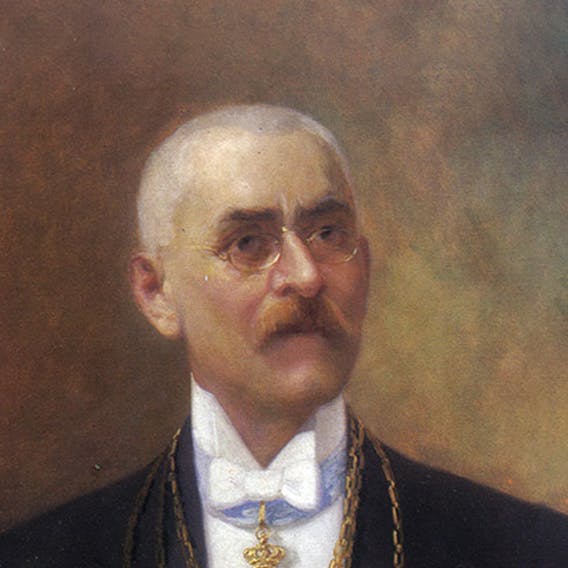
Spyridon Lampros (1851–1919)
Founding member of the Athenian Philological Society "Parnassos." Professor of Greek paleography, literature, and history at the University of Athens, university administrator, and prime minister of Greece. First known modern owner of Manuscript 18. (Photo courtesy of the National and Kapodistrian University of Athens.)
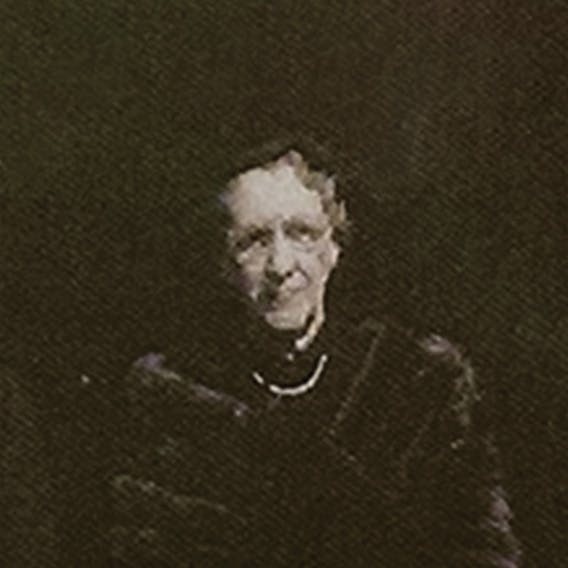
Lina Tsaldari (1887–1981)
Daughter, assistant, and heir of Spyridon Lampros. Member of Parliament and first female cabinet member in Greek history. Second known modern owner of Manuscript 18. (Photo courtesy of the National and Kapodistrian University of Athens.)